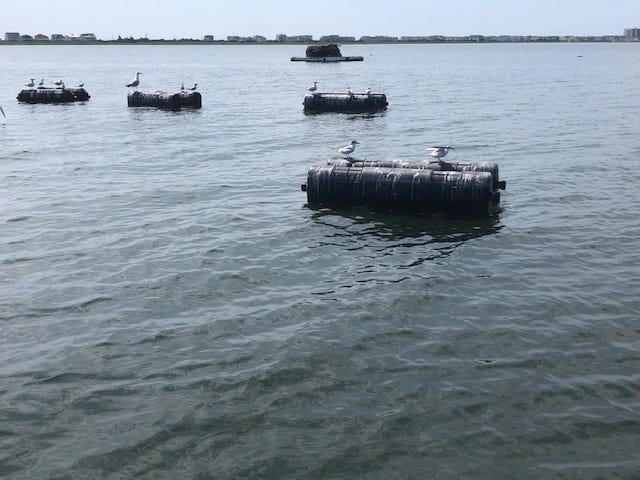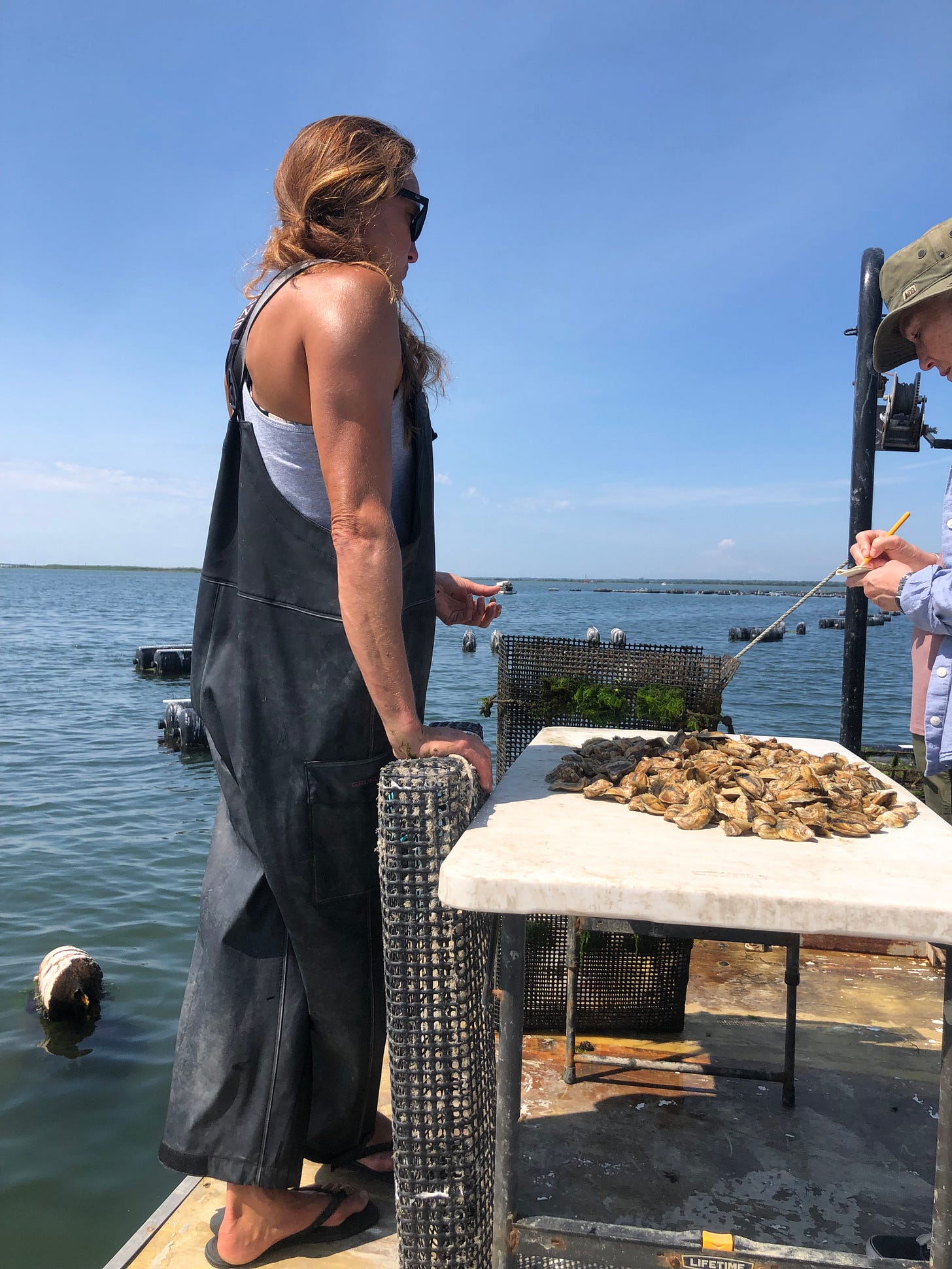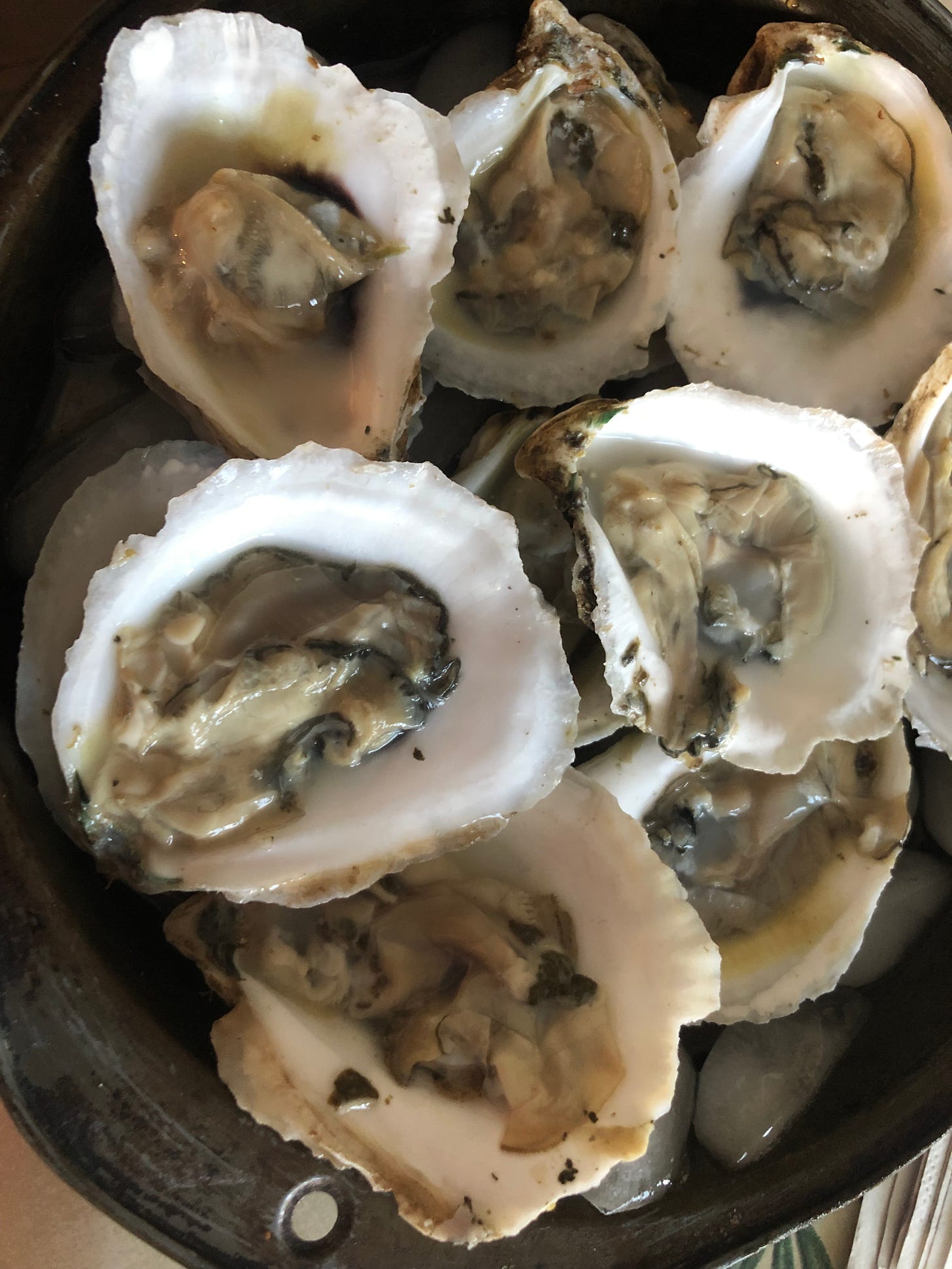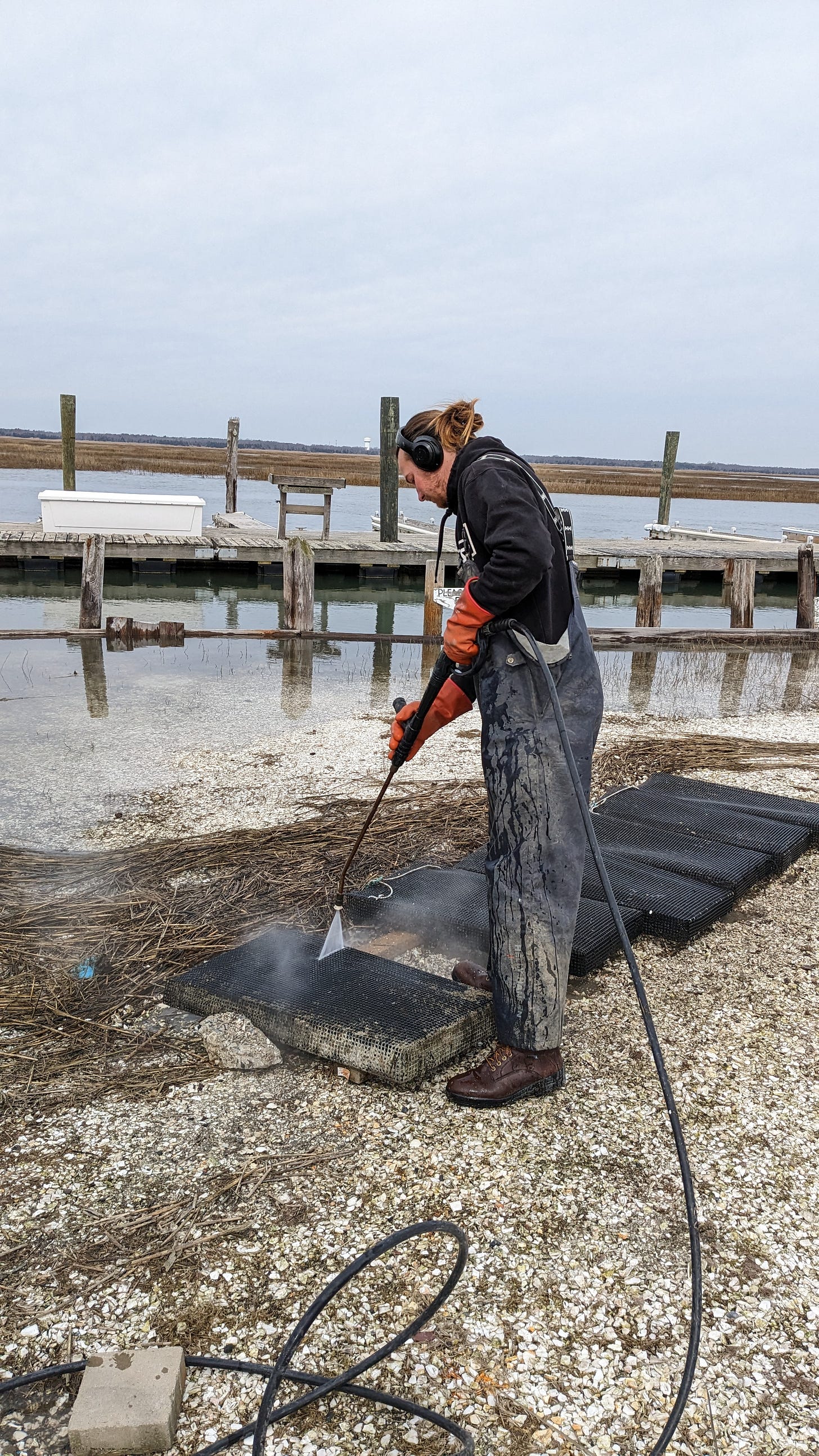Wake Up!
Checking in on the oyster farm
A day spent puttering around with Amanda Ferguson on her oyster farm usually ends with you feeling like a slug. Whale Creek Oyster Farm floats in Ludlam Bay off the little New Jersey shore town of Strathmere. Amanda’s partner, Morgan DeLany, runs the Whale Creek Marina and he is the kind of man who, when a woman one day says to him, “I’m going to start an oyster farm,” replies something like, “WOOHEE!” instead of “are you out of your mind?”
He had a lot to consider, though, in a decision that meant hitching his family to something as precarious as an oyster farm. Start with the business where most farmers are men, many of them at it a long time with established claims on the best spots. There are scant resources to learn how to establish a thriving farm: usually it’s only by finding a generous oyster farmer as a mentor. The coastal states often take more than a year to issue licenses and their regulations are labyrinth. Meanwhile you’re spending a lot of money to buy cages, a zillon oysters spry and finding a bank that will believe in you—which most won’t. You're also signing up for a lot of hard work centered around going out on the bay in all kinds of weather at least four days a week. It takes hours to hoist rows of heavy cages out of the water and then lift them up to gently agitate them back and forth to encourage the oysters clinging to the sides of the cage to settle back down with their companions and grow at the same rate and same size as all the others. Finally, you need to find a space in the bay to rent. After all this, and if you’re lucky, you need to believe that the other farmers will welcome you and poachers won’t pilfer your cages.
But Amanda possesses traits critical to farming success. Her family has generations of farming in their blood that has instilled in her the satisfaction that comes with sinking into the deep muck from which good food emerges. She thrives on brutal work and is extremely patient, dogged, and good humored. A lecture given at the local fire department by Lisa Colvo who runs Sweet Amalia Oyster Farm in which she encouraged women to take up the oyster trade hit a nerve with Amanda. She led a placid life, with two little boys and a gratifying job as an elementary teacher. She and Morgan had a lot of fun running the Marina through the summer. But she came home excited from Lisa’s lecture enthralled with the possibilities that oyster farming presented. She wasn’t asking permission and Morgan embraced something that would make her infinitely happy.
These are all very good reasons why, early one very hot August day, you find yourself trying not to fall off a flat bottom boat as it chugs out to her field of bouncing buoys that mark the 10 rows of her 72 cages. You get out of the way of the swinging hoist and her reaching into the water to attach its hook to the first cage. She reels it in and lowers it to a table where she inspects her crop and vigorously shake the cage. Other farmers have a mechanical tumbler. Amanda, demonstrating her love for bone weary labor, prefers to do it manually because she can keep a close eye on her charges’ health and growth. You pester her with questions that she has a good time answering. Mostly you stand back amazed at her work and the muscular strength of her arms. She is in her 40s. When you were her age your most arduous task consisted of plastering a sinking ceiling and corralling a mule-stubborn bucking seven year old and his sweet, soon-to-a-sullen-teenager brother. She is, in other words, awesome.
So, too, are her oysters. Very much like wine, the taste of oysters is affected by the climate, the water temperature, and the nutrition in their growing medium. Even oysters from identical gene pools will differ from one location to the next. All the oysters grown along the Eastern seacoast are Crassostrea Virginica but none taste or look the same. For instance Marylanders are small, Massachusetts are sweet, almost buttery. Maine has either a high metalic taste or a crisp finish. Amanada’s Ludlam Bay oysters are powerfully salty and bracing.
Back on the dock, she opens several for you to devour. One variety sits perky in their small purplish curvy shells; the other lounges the whole length of their long shells. The smaller ones are elegantly creamy while the larger ones have a rich lingering aftertaste. Both are an addictive gulp of extremely salty sea water. A dozen would be overwhelming. Four would be enough to satiate your desire.
Amanda harvests them through the summer and mostly sells them to the Deauville Inn. The Inn is a local landmark, once a shambling hangout, now a fairly fancy restaurant that caters to the new moneyed residents who are increasingly tearing down the town’s little shore houses to shoehorn in incongruous monstrosities. She charges the Inn $2 an oyster. They offer them on their menu for $4 a piece. There’s a conversation about charging them more.
Sunday’s daylight savings time seemed like a good day to drive down and see how Amanda and her oysters were doing before the summer season took off. But she was not there. Sometime late in the Fall, she and Morgan pack their sons into their boat and sail along the coast, landing in the Caribbean. They live on their boat through the winter months and tend to the repair and transportation needs of other owners’ vessels.
Meanwhile, her hibernating oysters are minded by a friend. He wears earphones as he power washes seaweed off some cages and you scare the bejesus out of him when you tap him on the shoulder. If you were bold, you would hound him with a couple of questions. If you were pushy, you’d ask if you could buy some oysters harvested in January. January is high peak oyster feasting when they’re at their fattest and sweetest. You are neither and, after he informs you when Amanda will be back, you take a walk around the bay to look for her farm. But high tide has flooded the area and you can’t get close enough to the shore line to see it.
Back in the car, you think you might stop in at the Deauville Inn for half a dozen Whale Creek oysters and a glass of white wine. You can’t afford the place, though, so you drive back home.
And one more thing….I’m just hanging out and would love to hear from you.






Great story about Strathmere’s awesome Oyster gal, Amanda!
Lovely story about a lovely-sounding woman and her super-lovely oysters. Where I am in Maine we see oyster farming as one way that aquaculture can contribute to mitigating environmental damage while providing a good income for retiring lobster fishers and good food for the rest of us.